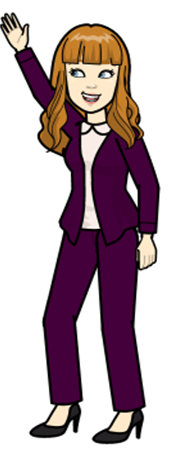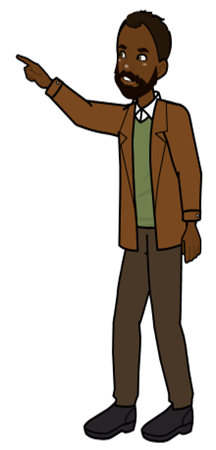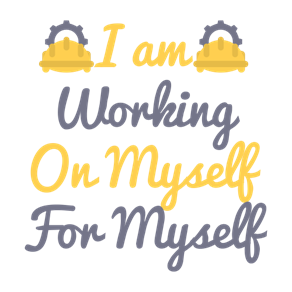I. WHAT ARE RECIPROCAL PRONOUNS?

We use each other or one another when a person does something to someone and, in return, that someone does something to the first person. For example:
- When Mariah and her sister talked to each other about their differences, they were able to get along better.
- You and your father should try to understand one another.
Reciprocal pronouns can also use the possessive forms each other’s and one another’s.
- Lory and Michael were helped out by each other’s parents.
- Charlie and Rose enjoyed one another’s company so much that they soon decided to get married.
II. WHAT ARE REFLEXIVE PRONOUNS?
The reflexive pronouns are myself, yourself, himself, herself, itself, ourselves, yourselves, themselves. There is also a reflexive generic pronoun: oneself. These are some of their uses.
- Same subject and same object
The reflexive pronouns are normally used when the subject and the object are the same person. Reflexive pronouns show that the action affects the person who is carrying it out.
- Tony and his friends are enjoying themselves listening to music.
- She cut herself chopping the vegetables.
- Talking to oneself is often a sign of reflection.
- After a preposition

Image 2
We can use reflexive pronouns after most prepositions if they refer back to the subject.
- He should be really proud of himself.
- Can you share a bit of yourself with us?
- For emphasis
We also use a reflexive pronoun to emphasize that the subject does the action, and nobody else. In this sense, we can use the reflexive at the end of the sentence or after the subject.
- I will talk to Mr. Spencer myself.
- I myself will talk to Mr. Spencer
- I think you should do it yourself, instead of having it done.
- My father himself painted the house.
- by oneself
We can say by myself, by yourself, etc. to mean ‘alone, without anybody else’, or also to mean ‘without anybody’s help’.
- She raised her three children by herself.
- My little sister doesn’t like to be by herself. She always wants us around.
- Reflexive substitutions
We can also use on my own, on your own, etc as reflexives.
- She did it on her own.
- I was on my own, all morning.
III. CONSOLIDATION
IV. EXERCISE I
V. READING TEXT

How You See Yourself
By Set to Go
2019
Throughout our lives we continually develop and construct an image of ourselves. This image is based on how we interact with the world. It is also formed through reflection on our experiences and how we feel. As we get older, the image that we have of ourselves (1)_______ We develop a better idea of who we are in the world and how we feel about ourselves. This becomes our (2)_______. And this image of ourselves influences how we act and present ourselves. Of course, in different environments, we show different parts of ourselves. We have different ways of behaving in the classroom versus how (3)_______ . But our core self-image usually stays stable, consistent, and balanced. Being able to rely on this stability is what allows us to make good decisions in any environment and (4)_______.
Describe yourself
When you stop to think about it, your self-image is actually made up (5)_______ that have been shaped and forged over time. Most of your self-image develops naturally without you thinking too much about it. If you had to describe yourself by filling in the statement “I am this kind of person,” what would you say? You could include descriptors like: happy, serious, courageous, quiet, self-confident, timid, friendly, honest, athletic, popular and so forth. The adjectives that you connect with yourself help make up your self-image. Of course, we don’t often (6)_______ , but it is a helpful and thought-provoking exercise. Why does it matter? It is important to learn about and be aware of (7)_______. This is because a stable self-image is key to a healthy sense of identity. When a person’s self-image is not an accurate reflection of them, (8)_______. There are two kinds of problems that can occur with self-image. The first is social. The second is personal.
Ever-changing self
Have you ever known anyone who seemed really different each time you saw them? Maybe one time they were really quiet and serious, and then another they seemed silly and childish, and the next time bossy and demanding. It is very likely that if you’ve had to spend any significant amount of time with a person like this, you found yourself feeling confused and irritated. In order to relate to other people, we need to have (9)_______, how they react to things, and how we will react to their reactions. People having relatively stable self-images is pretty important in having and maintaining good relationships with others. It is also worth noticing that people (10)_______may be dealing with an emotional problem, and this might indicate a need for professional care.
Clueless self
Have you ever watched a talent show like American Idol or America’s Got Talent? Typically, in the first few episodes, there are quite a few people who seem to be convinced that (11)_______ — when in fact they are quite obviously awful. These moments can be funny because it may seem as if these people are just having fun on TV. But these moments can also be sad, as (12)_______.
VI. PRACTICE
VII. BIBLIOGRAPHY
Cambridge University Press. (2015). Cambridge Advanced Learner’s Dictionary. Fourth Edition.
Eastwood, J. (2019). Oxford Practice Grammar. Intermediate. Oxford University Press.
Hewings, M. (2013) Advanced Grammar in Use with Answers: A Self-Study Reference and Practice Book for Advanced Learners of English. CUP
Murray, L. (2014) English Grammar. Cambridge University Press.
Swan, M & Walter, C. (2016). Oxford English Grammar Course. Intermediate. Oxford University Press.
VIII. WEB RESOURCES
Images_Compra propia de licencias de banco de imágenes de Pixton y Pngtree, exentas de derechos de autor. https://www-es.pixton.com/ & https://es.pngtree.com/free-backgrounds
IX. CREDITS
- Practice exercise written by Connie Reyes Cruz_2022_ENES- LEÓN-UNAM
- Audio version performed by Kimberly and Matt_Compra propia de licencia de uso de voces en Voicemaker, exenta de derechos de autor. https://voicemaker.in/ _Connie Reyes Cruz_2022_
-
Practice exercises written by Connie Reyes Cruz_2022_ UNAM-ENES-LEÓN
- "How You See Yourself" by Set to Go. Copyright © 2019 by the JED Foundation. Published with permission, all rights reserved. Unless otherwise noted, this content is licensed under the CC BY-NC-SA 4.0 license_ https://www.commonlit.org/es/texts/how-you-see-yourself
- Practice exercise written by Connie Reyes Cruz
- Image_Compra propia hecha por Connie Reyes Cruz de licencias de banco de imágenes de Pixton y Pngtree, exentas de derechos de autor. https://www-es.pixton.com/ & https://es.pngtree.com/free-backgrounds.
- Audio version performed by Kimberly and Matt_Compra propia de licencia de uso de voces en Voicemaker, exenta de derechos de autor. https://voicemaker.in/ _Connie Reyes Cruz_2022_